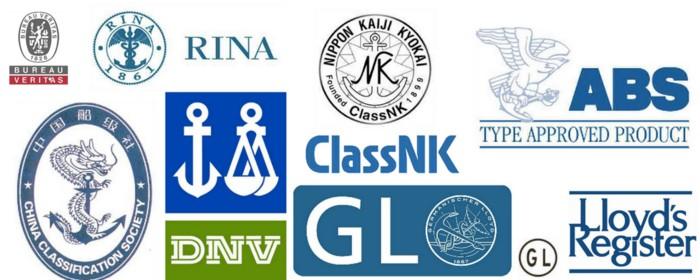Stainless steel reactor is an equipment used in petroleum, chemical industry, rubber and other processes such as vulcanization, nitration, hydrogenation, alkylation, polymerization and condensation
Stainless steel reaction kettle has the characteristics of rapid heating, high temperature resistance, corrosion resistance, sanitation, no environmental pollution, no need for automatic heating of the boiler, convenient use and so on. It is widely used in petroleum, chemical industry, rubber, pesticides, dyes, medicine, food, to complete vulcanization, nitration, hydrogenation, alkylation, polymerization, condensation and other technological processes. It is based on the full mixing of reaction substances. For heating, cooling, liquid extraction, gas absorption and other physical change processes, stirring device is required to obtain good results. It can be designed and processed for customers.
Principle characteristics
Atmospheric stainless steel electric heating reaction kettle has the characteristics of rapid heating, high temperature resistance, corrosion resistance, sanitation, no environmental pollution, electric heating stainless steel reaction kettle, no boiler automatic heating, convenient use, low price and so on. It is widely used in chemical, pharmaceutical, food and other industries. The material is 304 stainless steel.
The structural principle and characteristics of the reaction kettle: the reaction kettle is composed of the pot body, pot cover, agitator, jacket, support and transmission device, shaft sealing device, etc. the material and opening can be determined according to the user's process requirements. Heating forms include electric heating, oil heating, gas heating, water heating (or cooling), open fire heating, etc. Jacket forms are divided into: jacket type and outer half pipe type. Jacket oil heating type is equipped with a guide device. Generally, the mixing forms include paddle type, anchor type, frame type, screw type, wall scraping type, etc. High speed types include dispersed impeller type, turbine type, high shear type and propeller type, which can be selected by customers according to the process. The transmission forms include ordinary motor, explosion-proof motor, electromagnetic speed regulating motor, frequency converter, etc. the reducer has cycloidal needle wheel type, worm wheel type, planetary stepless speed change type. The shaft seal is ordinary water cooling packing seal, combined tetrafluoro packing seal and mechanical seal. The discharging forms include ball valve and unfolding valve.
Scope of application
Stainless steel reactors are widely used as pressure vessels for reaction, evaporation, synthesis, polymerization, saponification, sulfonation, chlorination, nitration and other processes in chemical, food, coating, hot-melt adhesive, silica gel, paint, medicine, petrochemical production, such as reactors, reactors, decomposition pots, polymerizers, etc. The reaction pot is mainly composed of four parts: inner tank, jacket, mixing device and support base (with insulation structure can be adopted according to process requirements).
1.The inner tank body is made of stainless steel (SUS304, SUS316L or SUS321) and other materials according to the process requirements. The inner surface is mirror polished. It can be cleaned online by CIP and sterilized by SIP, meeting the requirements of health specifications.
2.The jacket shall be made of stainless steel (SUS304) or carbon steel (Q235-B) according to the process requirements.
3.Suitable diameter height ratio design, customized mixing device as required; The mixing shaft seal adopts a pressure resistant sanitary mechanical sealing device to maintain the working pressure in the tank and prevent unnecessary pollution and material loss caused by material leakage in the tank.
4.The supporting type shall be the hanging lug type or the floor outrigger type according to the operation requirements.
Structure performance
The equipment is mainly composed of tank, jacket and mixing system.
1. Material of stainless steel reactor
The parts in contact with materials are made of 304 or 316L high-quality stainless steel, meeting GMP standards.
2. Accessories of stainless steel reaction kettle
◆ the mixing form is frame mixing to ensure that the materials are evenly mixed in a short time; At the same time, the frame type, anchor type and slurry type can be selected as required
◆ sanitary mechanical seal is used for sealing, which can ensure the pressure in the tank and prevent unnecessary pollution caused by material leakage in the tank;
◆ the interface adopts ISO standard quick mounting clamp type, which is convenient and sanitary;
◆ sterile respirator, CIP cleaning nozzle, mirror, flange, sanitary quick opening manhole, etc
3. Surface treatment of stainless steel reactor
The inner surface adopts mirror polishing to ensure that there is no sanitary dead angle. The fully enclosed design ensures that the material is always in a sterile state. The outer surface can be sandblasted, frosted, and cold-rolled primary color matte treatment.
Heating and cooling: steam, electric heating and heat transfer oil can be selected as heating methods to meet the process requirements of different working environments such as acid resistance, alkali resistance, high temperature resistance, abrasion resistance and corrosion resistance.
Technical reference
Technical reference for stainless steel reaction vessels
Model | Nominal capacity L | Actual capacity L | Heat power KW*Qty. | Oil jacket capacity L | Inner pot size Dmm | Jacket size D1mm | Support screw hole center D2mm | Expander capacity L |
50L | 50 | 78 | 2×4 | 96 | 400 | 600 | 828 | 10 |
100L | 100 | 127 | 2×6 | 127 | 500 | 700 | 928 | 15 |
300L | 300 | 327 | 4×6 | 218 | 800 | 1000 | 1148 | 20 |
500L | 500 | 509 | 4×9 | 269 | 900 | 1100 | 1252 | 25 |
1000L | 1000 | 1017 | 4×12 | 400 | 1200 | 1400 | 1588 | 40 |
2000L | 2000 | 2154 | 4×15 | 850 | 1400 | 1600 | 1840 | 80 |
3000L | 3000 | 3201 | 5×15 | 1015 | 1600 | 1750 | 2040 | 100 |
4000L | 4000 | 4020 | 5×15 | 1226 | 1600 | 1750 | 2070 | 120 |
5000L | 5000 | 5170 | 5×18 | 1400 | 1800 | 2000 | 2320 | 140 |
Example of a stainless steel reactor
1. Plan the production capacity of each batch or the full capacity of the reaction vessel.
2. Determine the physicochemical properties of the working medium.
3. The working pressure, temperature, etc. required for the corresponding production process.
4. Choose the sealing form (mechanical seal/packing seal) for stainless steel reaction kettle.
5. Choose the heating mode (steam heating/thermal oil circulation heating/electric heating/resistance far-infrared heating).
6. Design of reactor agitator.
Operating procedures
Operating procedures for stainless steel reaction vessels:
Ⅰ.Before starting the stainless steel reactor: ↓
1. Check whether the kettle, agitator, rotating parts, auxiliary equipment, indicating instruments, safety valves, pipelines, and valves meet safety requirements.
2. Check if water, electricity, and gas meet safety requirements.
Ⅱ. Stainless steel reactor in operation: ↓
1. Before adding materials, the agitator of the reactor should be turned on first. When there is no noise and it is normal, the materials should be added to the reactor. The amount of materials added should not exceed the process requirements.
2. Before opening the steam valve, open the return valve first and then the intake valve. The steam valve should be opened slowly to preheat the jacket and gradually increase the pressure. The pressure inside the jacket should not exceed the specified value.
3. The steam valve and cooling valve cannot be started simultaneously, and hammering and collision are not allowed when the steam pipeline passes through.
4. When opening the cooling water valve, first open the return valve, and then open the inlet valve. The cooling water pressure shall not be lower than 0.1 megapascals or higher than 0.2 megapascals.
5. The water ring vacuum pump should start the pump first and then supply water. When stopping the pump, stop the pump first and then stop the water, and the accumulated water in the pump should be drained.
6. Check the operation of the reactor at any time, and if any abnormalities are found, stop the machine for maintenance.
7. When cleaning the titanium epoxy (enamel) reactor, do not use alkaline water to brush the reactor, and be careful not to damage the enamel.
Ⅲ.After the stainless steel reactor is shut down: ↓
1. Stop stirring, cut off power, and close various valves.
2. When shoveling the pot, the power supply of the mixer must be cut off, warning signs must be hung, and someone must be assigned to supervise.
3. The stainless steel reactor must undergo regular technical inspections in accordance with the requirements of pressure vessels. If it fails the inspection, it cannot be operated.
Classification selection
1. Product name: Glass lined reaction kettle
2. Product Name: Multi functional Disperse Reactor
3. Product Name: Magnetic Stirring Reactor (Chemical Reactor)
4. Product Name: Electric Heating Reactor
5. Product Name: Steam Heating Reactor
6. Product Name: Stainless Steel Reactor
Applicable fields: Suitable for high-temperature and high-pressure chemical reaction tests in departments such as petroleum, chemical, pharmaceutical, metallurgical, scientific research, and colleges, achieving high stirring effect on viscous and granular substance
Maintenance
When using a stainless steel reactor, the refrigerant inlet valve must be closed, the remaining refrigerant in the pot and jacket must be drained, the material input must be done, the agitator must be started, and then the steam valve and electric power supply must be turned on. After reaching the required temperature, the steam valve and electric power supply should be turned off first. After 2-3 minutes, the agitator should be turned off. After the processing is completed, the remaining condensate in the pot and jacket should be drained, and the sticky materials should be washed with warm water as soon as possible. Then, the inner wall of the container should be thoroughly cleaned with alkaline water at 40 ℃ to 50 ℃, and the steam valve and electric power supply should not be turned on, especially when there are no materials (heat absorbing medium) in the stainless steel reactor pot and the pot is empty. Pay special attention to the use of steam pressure and do not exceed the rated working pressure.
Regular attention should be paid to the working condition of the entire equipment and reducer when maintaining the stainless steel reactor. If the lubricating oil of the reducer is insufficient, it should be replenished immediately. The electric heating medium oil should be replaced every six months. The safety valves, pressure gauges, distillation holes, electric heating rods, electrical instruments, etc. on the jacket and pot cover should be inspected regularly. If there is a malfunction, it should be replaced or repaired immediately. When the equipment is not in use, it is necessary to thoroughly clean the inner and outer walls of the container with warm water, regularly scrub the pot body, keep the exterior clean and the inner container bright, and achieve durability. Reactor is an indispensable anti-corrosion equipment in the chemical industry. Mechanical collisions, sudden temperature changes, and other factors often cause delamination, cracks, bubbles, pores, and other damage to the surface glaze during use. These defects are absolutely not allowed in enamel equipment. Once this phenomenon occurs, it must be repaired. The on-site repair agent using polymer composite materials is a two-component composite material composed of polymer, alloy steel powder, or wear-resistant ceramic powder as the substrate and supplemented with a curing agent. Compared with ordinary resin based repair agents, polymer composite materials rely on their finer polymer structure, which gives them stronger adhesion and excellent corrosion resistance and corrosion resistance. Polymers can even penetrate into metals, forming a tighter protective layer of polymer composite materials. Repair process: surface cleaning → rust removal → anhydrous alcohol cleaning → application of bottom layer repair agent → application of surface layer repair agent → curing → use.
Installation Details
1. The high-pressure stainless steel reactor should be placed indoors. When equipping multiple high-pressure kettles, they should be placed separately. Each operating room should have a direct exit to the outside or passageway, ensuring good ventilation at the equipment grounding point.
2. When installing the kettle cover, it is necessary to prevent the sealing surfaces between the kettle body and cover from colliding with each other. Carefully place the kettle cover in the fixed position on the kettle body. When tightening the main nut, it must be tightened diagonally and symmetrically in multiple stages. Apply force evenly and do not allow the kettle cover to tilt to one side to achieve a good sealing effect.
3. At the connection between the front and back nuts, only the front and back nuts can be rotated, and the sealing surfaces of the two arcs must not rotate relative to each other. When all nut pattern connecting parts are assembled, lubricating oil should be applied.
4. Needle type valve line sealing can achieve a good sealing effect by gently rotating the valve needle and pressing the cover tightly.
5. Rotate the rotating body on the kettle by hand and check for flexible operation.
6. The controller should be placed flat on the operating table, with a working environment temperature of 10-40 ℃ and a relative humidity of less than 85%. The surrounding medium should not contain conductive dust or corrosive gases.
7. Check whether the movable parts and fixed contacts on the panel and rear panel are normal, remove the upper cover, check whether the connector contacts are loose, and whether there is any damage or rust caused by poor transportation and storage.
8. After the operation is completed, it can be naturally cooled, cooled with water, or placed above the bracket for cooling. After the temperature drops, release the pressurized gas inside the kettle to reduce the pressure to normal pressure (the pressure gauge shows zero), then symmetrically and evenly loosen the main nut, remove the main nut, and carefully remove the kettle cover and place it on the bracket.
9. After each operation, the residue on the stainless steel reactor body and cover should be removed. The main seal should be cleaned regularly and kept clean. It is not allowed to wipe with hard objects or rough surfaces.






